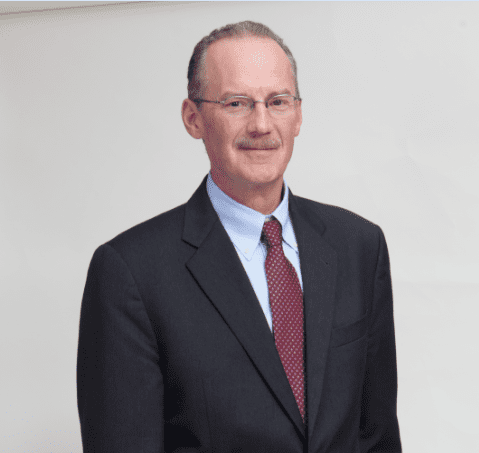
Mark Gardner, CEO of Sappi North America, has learned a number of valuable lessons in his career—but one in particular sticks out. And it wasn’t a pleasant one.
He went to one of Sappi’s paper mills in Michigan in the early 2000s. When he got there, the mill was on top of the world and one of the company’s most profitable mills. By the time he left, more than 70% of the mill’s profit had left the site. Gardner says imported products from Europe and Asia saturated the market and undercut the company’s prices up to 30%.
“It left a very clear impression in my mind of what it’s like to be sitting on top and then all of a sudden, you get global competitors, not domestic competitors, who have good products, but other advantages that you have to compete against,” says Gardner. “You always have to be looking at who your competition is and really understand that you’re not competing with maybe more traditional competitors, you got to look at who’s coming down the road.”
Throughout his career at Sappi, Gardner has worked in various parts of the global manufacturing company’s businesses, allowing him to learn various lessons—both easy and hard to swallow. This helped prepare Gardner for his role as CEO of Sappi North America in Boston, a position he has held for 11 years.
Gardner spoke to Chief Executive about an array of topics from the challenges in manufacturing, sustainability and more. Below are excerpts from this conversation.
What are some of the big challenges, Mark, that you’re facing in the manufacturing sector?
First and foremost, and I think it’s true for any manufacturer in the United States or anywhere in the world, they’ve got to think globally as much as you [think about] your local markets. Because today, the world is quite small. And innovation and technology are fleeting, you really have to stay active and focus on that. It’s changing dynamically, and it might change as we go forward with these different things going on the tariff side of the world at the moment.
I would still say that a challenge in manufacturing here in North America as a pulp and paper company is making sure that you’re offering the highest value product you can at the lowest cost. Because there’s always going to be somebody coming on to you, on to the scene and into your market with a product that will be equally as good, unless you’ve got innovation that you can separate yourself from the pack, and will find ways to do it at costs that will be very competitive.
So you have to be constantly looking down the road as to what is it your customers need and what they want. What are their unexpected or unanticipated needs coming at them? How you can meet their needs and better service their needs? How to do it before your competitors do, and figure out ways to do it with a distinct advantage that you can hang on to? For North America, that’s one of the things that we’ve very much focused on.
Every piece of our business that we’re in, we focus on making sure that we are offering high-quality distinct products that are difficult to be replicated by anybody, which offer the customer some advantages for doing business with us versus somebody else. And we do that with a very extensive R&D effort, and also by maintaining and investing in our assets, our manufacturing assets, so that they can stay globally competitive and globally run very well.
But around that, I’d say the next big challenge that we face is one of making sure that you have a workforce that is highly educated and has opportunities to grow and change, but also one that you can attract new employees into. And manufacturing, I think it’s going to have a renaissance, and I think people are starting to come back around and realize there are great jobs in manufacturing. But for some of the newer, later generations…we have to go out and actually make sure that they understand what goes on in pulp and paper mills. And the sciences and the technologies that are involved, and the abilities for people to have exciting careers and jobs in mills. That’s a real challenge. Our industry is constantly reinventing itself, and we need to find more workers for that, for particularly supply.

Chief Executive Group exists to improve the performance of U.S. CEOs, senior executives and public-company directors, helping you grow your companies, build your communities and strengthen society. Learn more at chiefexecutivegroup.com.
0

1:00 - 5:00 pm
Over 70% of Executives Surveyed Agree: Many Strategic Planning Efforts Lack Systematic Approach Tips for Enhancing Your Strategic Planning Process
Executives expressed frustration with their current strategic planning process. Issues include:
Steve Rutan and Denise Harrison have put together an afternoon workshop that will provide the tools you need to address these concerns. They have worked with hundreds of executives to develop a systematic approach that will enable your team to make better decisions during strategic planning. Steve and Denise will walk you through exercises for prioritizing your lists and steps that will reset and reinvigorate your process. This will be a hands-on workshop that will enable you to think about your business as you use the tools that are being presented. If you are ready for a Strategic Planning tune-up, select this workshop in your registration form. The additional fee of $695 will be added to your total.

2:00 - 5:00 pm
Female leaders face the same issues all leaders do, but they often face additional challenges too. In this peer session, we will facilitate a discussion of best practices and how to overcome common barriers to help women leaders be more effective within and outside their organizations.
Limited space available.

10:30 - 5:00 pm
General’s Retreat at Hermitage Golf Course
Sponsored by UBS
General’s Retreat, built in 1986 with architect Gary Roger Baird, has been voted the “Best Golf Course in Nashville” and is a “must play” when visiting the Nashville, Tennessee area. With the beautiful setting along the Cumberland River, golfers of all capabilities will thoroughly enjoy the golf, scenery and hospitality.
The golf outing fee includes transportation to and from the hotel, greens/cart fees, use of practice facilities, and boxed lunch. The bus will leave the hotel at 10:30 am for a noon shotgun start and return to the hotel after the cocktail reception following the completion of the round.